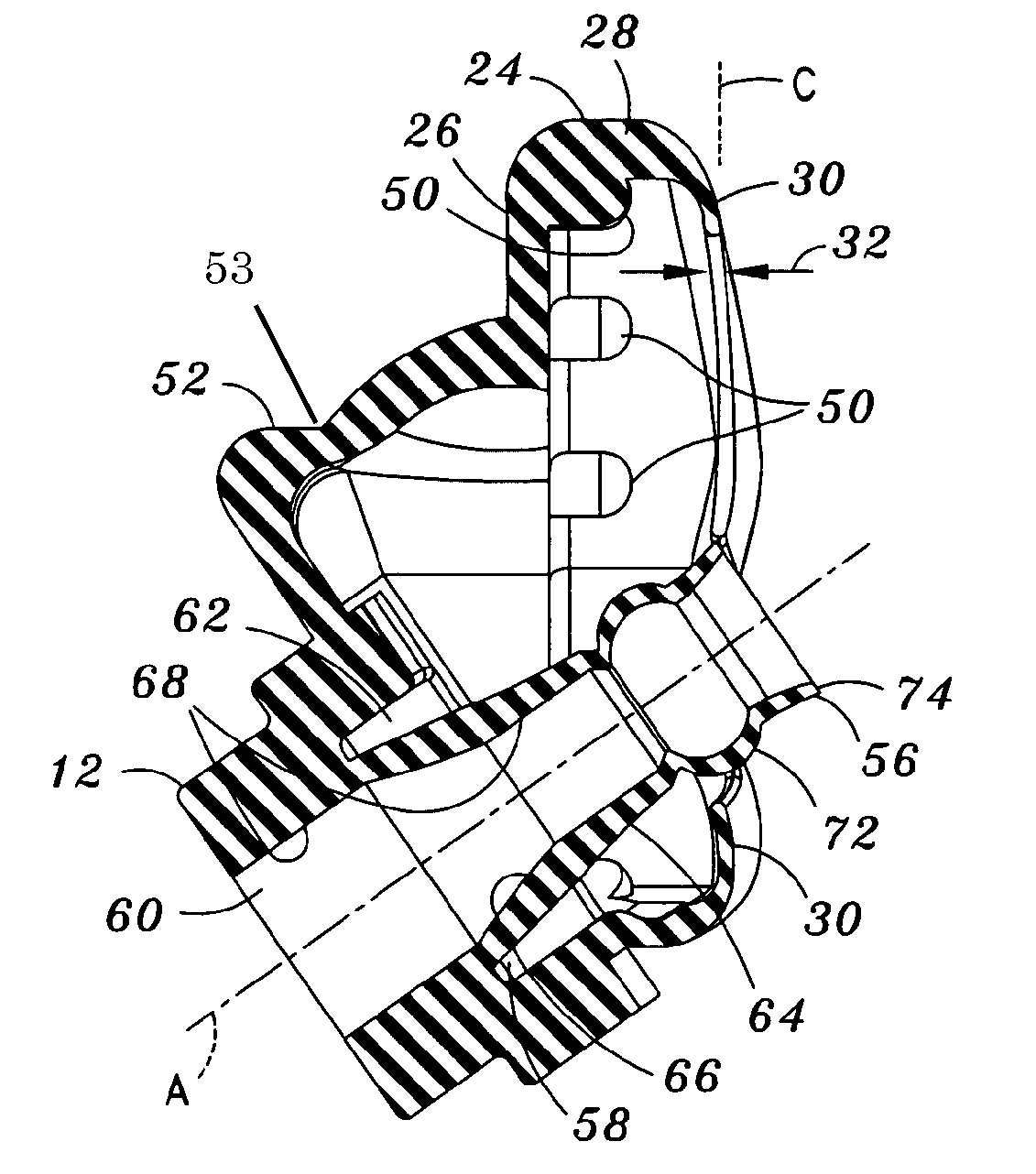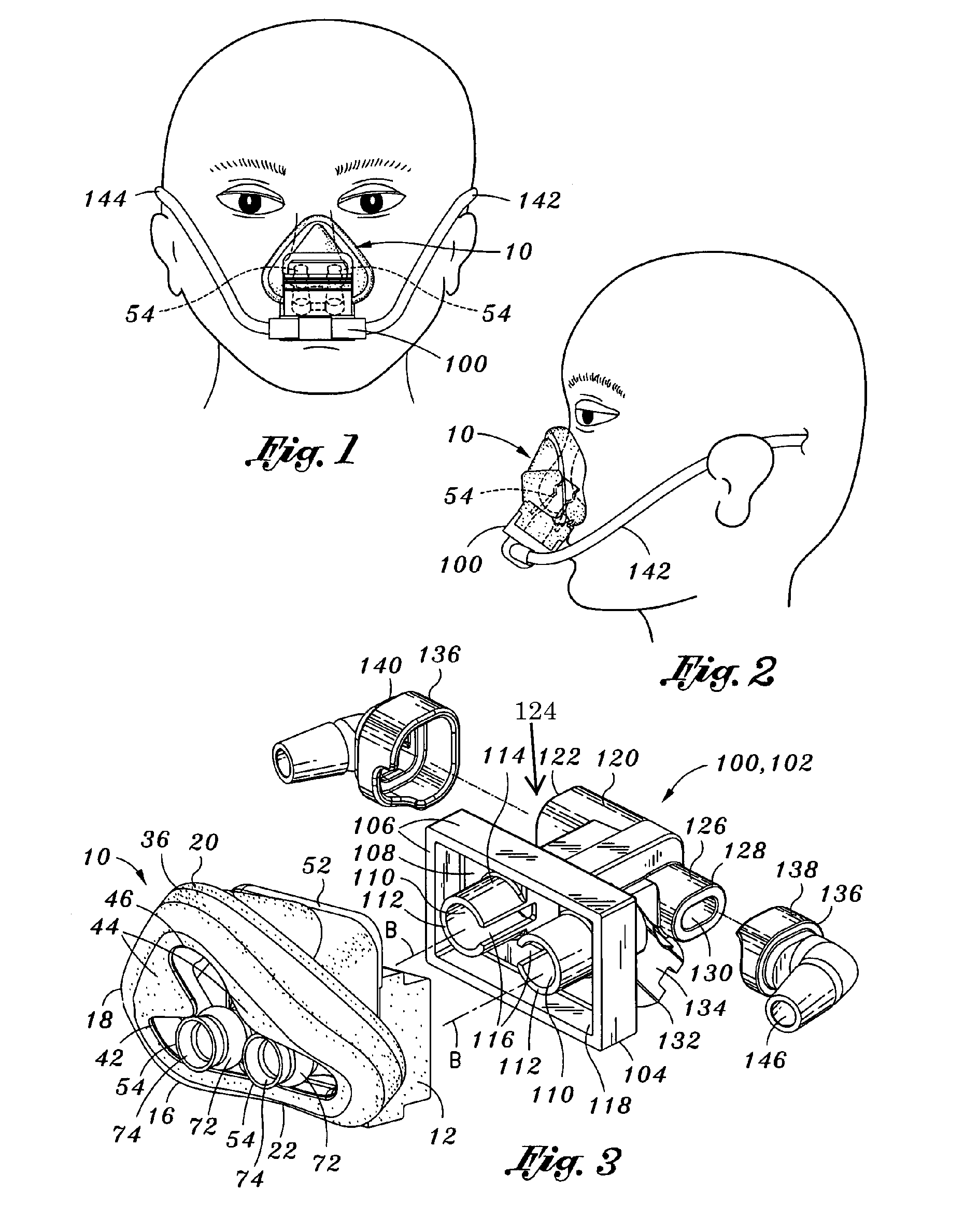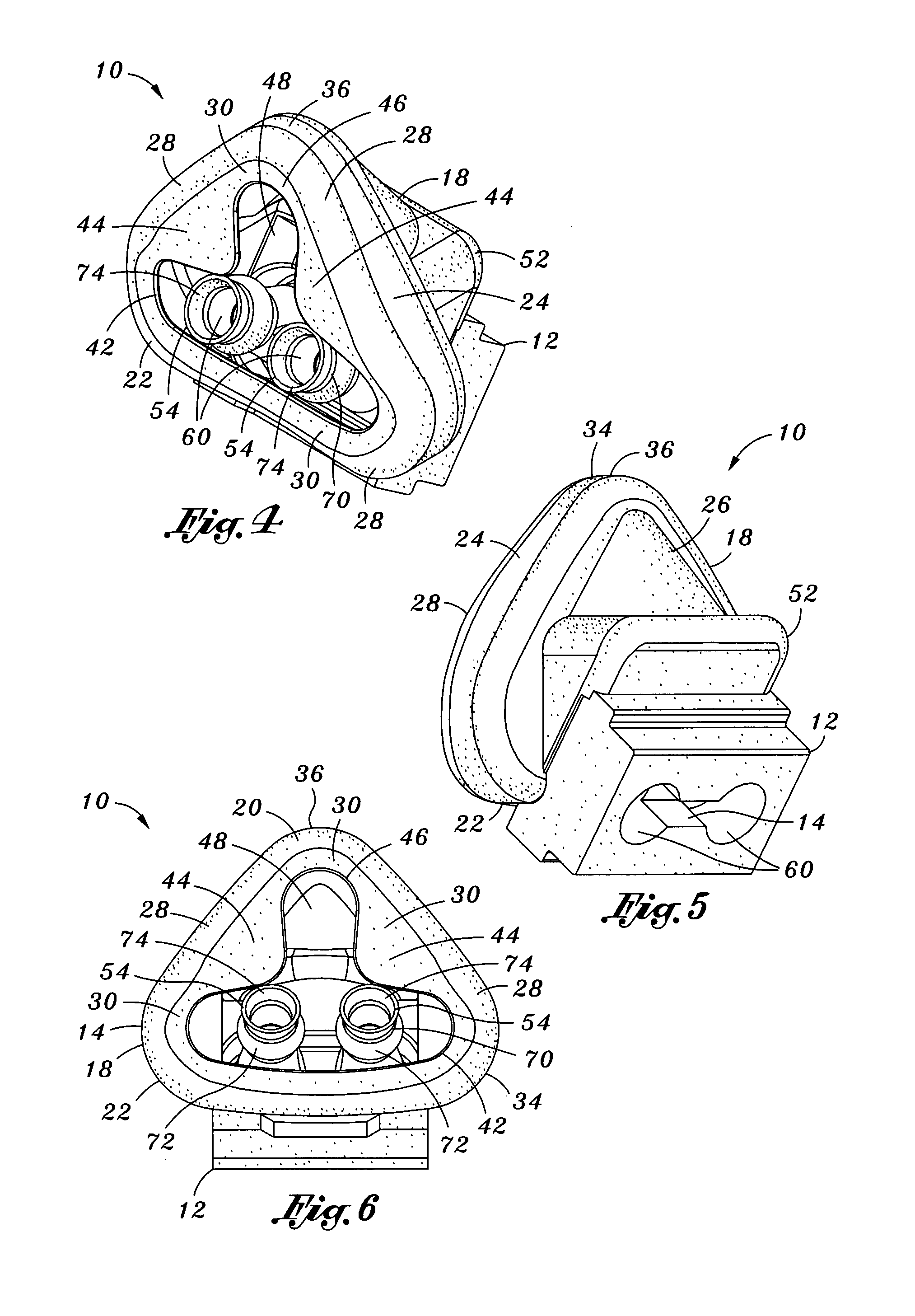Integrated mask and prongs for nasal CPAP
a technology of nasal cpap and integrated mask, which is applied in the field of unique configuration of nasal mask, can solve the problems of nasal cpap, improper administration, and certain deficiencies of conventional nasal masks and nasal prongs, and achieve the effects of facilitating lateral deflection of flare portions, and better conforming to different nostril spacings
- Summary
- Abstract
- Description
- Claims
- Application Information
AI Technical Summary
Benefits of technology
Problems solved by technology
Method used
Image
Examples
Embodiment Construction
[0031]Referring now to the drawings wherein the showings are for purposes of illustrating preferred embodiments of the present invention and not for purposes of limiting the same, shown in the figures is an integrated nasal mask 10 specifically adapted for delivering gas to a patient with improved sealing effectiveness around the patient's nose. In its broadest sense, the integrated nasal mask 10 comprises a mask body 18 configured to envelope a patient's nose and a pair of nostril-engaging stems 54 sized and configured to sealingly engage with the patient's nostrils.
[0032]Advantageously, the nasal mask 10 is suitable for providing various forms of respiratory therapy including nasal CPAP therapy. For example, as illustrated in FIGS. 1-3, the nasal mask 10 may be configured to be interchangeably or removably mountable to a universal interface 100 such as may be fitted with a supply tube 144 and a pressure tube 142 extending outwardly from opposed sides of the universal interface 100...
PUM
 Login to View More
Login to View More Abstract
Description
Claims
Application Information
 Login to View More
Login to View More - R&D
- Intellectual Property
- Life Sciences
- Materials
- Tech Scout
- Unparalleled Data Quality
- Higher Quality Content
- 60% Fewer Hallucinations
Browse by: Latest US Patents, China's latest patents, Technical Efficacy Thesaurus, Application Domain, Technology Topic, Popular Technical Reports.
© 2025 PatSnap. All rights reserved.Legal|Privacy policy|Modern Slavery Act Transparency Statement|Sitemap|About US| Contact US: help@patsnap.com



